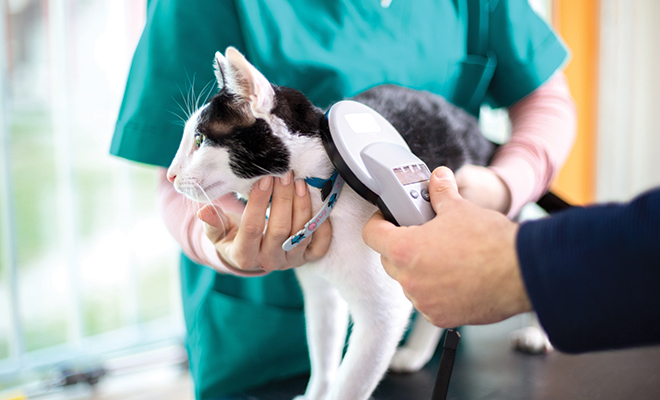
Wherever They May Roam
Our pets are our constant companions. They can often be found right by our sides whether we are lounging on the couch or walking around the block.
However, as bonded to us as they are, there are occasions where their urge to explore or the temptation to chase a squirrel is more than they can bear. Before we know it, our fur child has ventured off the beaten path and is at risk of not being able to find their way home. In such cases, it’s nice to have the added security of a pet tracking system in place, the equivalent of the porch light left on to guide your pet back to you. These days the options are endless, but a few make guarantees every pet owner can depend on.
The Paw Tracker
One of the more popular choices for keeping an eye on your pet, should they decide to test the green grass theory, is The Paw Tracker. Promising style and function, The Paw Tracker clips to an existing collar and tracks your pet’s GPS location as well as their daily activity. It’s waterproof and shockproof and works with both iOS and Android devices, allowing owners to keep a virtual eye on their pet. Out of sight no longer means out of mind; now out of sight doesn’t even have to mean out of sight at all.
Whistle
Much like The Paw Tracker, Whistle attaches to your pet’s existing collar and tracks their GPS location in real time to help locate them quickly in the unfortunate event they leave your side. However, Whistle provides a more extensive version of tracking your pet’s daily activity. With Whistle, daily goals can be set based on age and breed. A timeline ensures medications are given and dietary notes are logged in one central location. Updates are received through a mobile app, available for both iOS and Android, and they can be synced across multiple devices, making communication between owner and pet sitters easier than ever before.
Microchipping
Another smart way to help your lost pet return home is to have them microchipped by your veterinarian. A microchip, the size of a grain of rice, is implanted just beneath the skin of the pet and their owner information is registered with a national database. Chips are read using an electronic scanner, a tool found at most pet shelters and veterinary offices. Animals that are rescued by Animal Control or strays taken to a veterinarian are immediately scanned for a microchip; if one is detected, the database will retrieve the owner’s information from the microchip manufacturer and the owner will be contacted
Microchip versus GPS Tracker
Microchipping is effective, but sometimes owners assume this will locate their pet should they go missing. Unfortunately, this isn’t always the case. The microchip will aid in returning your pet once found, but they have to be found first. The microchip does not assist in actively searching for the missing pet, only in identifying them once they’ve been located.
A Tractive GPS Tracker, on the other hand (or paw), will track your pet’s location in real-time, providing a constant charting of where your pet is and more than likely where they will be going. In doing so, you’ll be able to locate them and meet them, ensuring a safe return home. Oftentimes, GPS trackers have the option of creating a virtual fence, allowing you to outline a certain area. If your pet leaves that area, an alert will be sent to your phone, where you can see not only where your pet was and the exit point of the designated safe zone but also their current path. This information is provided in real time so you can see exactly where your pet is and it makes finding them easier than ever.
GPS trackers are especially effective for dogs that may range over a wide area, such as hunting or tracking dogs, or pets in rural areas. If you’re considering one, make sure your cell service is active in the area in which you will be using it. Obviously, the animal must keep any tracker on their body, making a combination of methods one for serious thought.
Being Proactive
Prevention is another proactive way to reduce risk of losing a furry friend. Pet parents should routinely check the condition of fences and kennels for holes and weak spots. Doing monthly checks on collars and leashes to make sure they are strong and secure is a savvy idea. Training a dog to respond to an immediate down or return command can keep it safe if it bolts or accidentally gets off leash.
We all like to live on the edge every now and then, and our pets have their moments too. By using these tips and tools to keep pets safe, we can ensure a fun day at the beach or park won’t turn into a tragic situation. ■
Sources: animalfoundation.com, thepawtracker.com, tractive.com and whistle.com.







